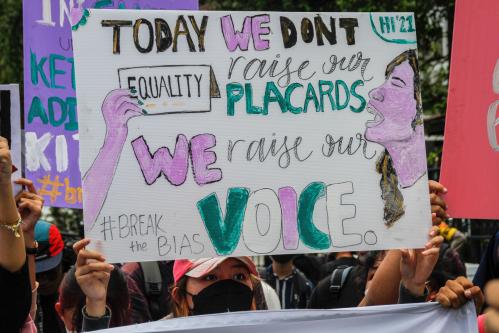Education has been a more prominent topic in the campaigns for president than it was in the last two cycles. With respect to school choice, Republicans have been enthusiastic supporters of policies to support private school choice, including vouchers, education savings accounts, and tax-credit scholarships, whereas Democrats strongly oppose such programs but generally are supportive of charter schools.
None of the candidates has to date mentioned, much less taken a position on, what is likely to be one of the most powerful levers of K-12 education reform: open enrollment in regular public schools tied to portable funding. Systems allowing parents to choose schools within their district of residence (intra-district choice) are presently available in 55% of the nation’s largest school districts, more than double the percent of districts that offered school choice 15 years ago. In addition, programs that allow students to enroll in a school outside their home district are available in at least twenty-three states.
Because 85% of the nation’s K-12 students are educated in regular public schools and another 5% in public charter schools, advocates that support private school choice because they want to advance market-based solutions for school reform are taking their eye off the prize. Private school vouchers are politically contentious everywhere and illegal in some states. Further, the seat capacity of private schools, which presently serve less than 10% of students, is limited with respect to the need and demand for schools of choice. If Willie Sutton had taken the approach of present day school choice advocates he would have robbed convenience stores rather than banks. Public schools are where the students are.
There is no reason that market-based mechanisms cannot operate in the public school sector. Parental choice, flexibility in school management, funding following students, and clear information on school performance are the four cornerstones of a market-based model of school reform. When all four are present for public schools then the system can be called public school vouchers.
Federal policy to advance a system of public school vouchers could be based on a state option: a state that puts in place or strengthens a public school open enrollment system in which state and local funds follow students to any public school of choice could exercise the option of having federal funds similarly distributed. A student in a state exercising the option would have all local, state, and federal funds intended to cover the educational costs of similar students directly attached to the student in question. This particular dollar amount would be deposited to the account of the public school that enrolls the student.
There are vagaries of geography and local culture as related to school choice, many devilish details in the design and implementation of public school voucher programs, and a lack of much in the way of rigorous evidence on the impacts of such systems in the U.S. This means that those who favor open enrollment in public schools, as I do, shouldn’t expect to convince those in opposition to switch their positions, at least not based on the type of evidence presented here. However, for presidential candidates who favor market-based mechanisms of school reform as well as those who believe as a matter of equity that low-income parents should have the ability to choose a public school for their child rather than having to accept the neighborhood school where they live, there is a way forward at the federal level: Allow states interested in doing so to package their state, local, and federal funds as a public school voucher, spendable at any public school in which the child enrolls.
A full report on public school vouchers is available
here
.
The Brookings Institution is committed to quality, independence, and impact.
We are supported by a diverse array of funders. In line with our values and policies, each Brookings publication represents the sole views of its author(s).



Commentary
Why public school vouchers could have bi-partisan appeal
October 6, 2015